Fool's Gold
POSTED ON 08/03/2010I tried a few cleanskins while I was in Australia this time round. A cleanskin is a wine with no label sold cheap because it's surplus to requirements. Don't therefore expect Château Lafite from a cleanskin. On the other hand you should expect something decent. Otherwise why bottle the wine at all rather than sell it off in bulk. I've had good cleanskins before. Last time I was in Australia, my father-in-law produced a memorable bottle of a Hardy's 2002 that had cost him AUD $2.50. I enthused about it so much that he kept his last bottle (from two cases) for my latest trip and I wasn't disappointed. It was a lovely drop of cool climate cabernet with a nice touch of oak and I don't know to this day why it was ever sold as a cleanskin. A last minute cancelled order perhaps?
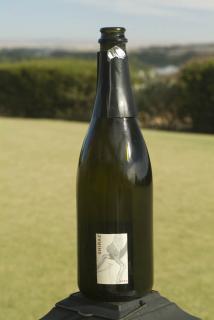 Not a cleanskin, but a fine 2002 Sparkling Shiraz from Ashton Hills' Stephen George
Not a cleanskin, but a fine 2002 Sparkling Shiraz from Ashton Hills' Stephen George
What was less than lovely were some of the other cleanskins I tried while I was over, not my father-in-law's I hasten to add. Maybe I'm just being picky but I found a number of them were awfully lean on fruit and pinched the mouth and shrank the tongue like a lemon. I know they didn't cost that much and that after a long day at work a lot of people are probably happy to knock back a bottle like this with a sausage sizzle, but why make excuses for poor wine? Australia's wine glut conveys the impression that they can get away with selling a lot of surplus wine on the cheap, but it doesn't do much for the value of genuinely good Australian wine, of which there's plenty, or the image of Australian wine, which doesn't need rotgut red cleanskins to drag it down further. I'd love to see an Australian wine journalist looking into the cleanskin economy.
Talking of acidity, I was given a lesson in comparing fine, aged Australian and fine European wine when Charmaine and I went to visit her ex, Mike Fogarty, in the Adelaide Hills last week. Mike used to make the wine at Tamar Ridge before Gunns came along and rained on his parade with their plans for a pulp mill in Tasmania's scenic Tamar Valley. He left because he couldn't stand the idea of working for a destroyer of the environment. Out of the frying pan....He then went to the Nepenthe and made some excellent wines (two well-deserved Decanter golds among them last year) before the inappropriately-named winery ((Nepenthe = a pain- easing drug)) owner, Ed Tweddle shot himself and Nepenthe was sold to McGuigan, latterly Australian Vintage. In their wisdom, they closed the winery (which is now for sale) and decided to make Nepenthe at Chateau Yaldara instead. So Mike was on the move once again. After searching for the right spot, he, his partner Di and their two cats, Dave and Silvia, found a beautiful five hectare vineyard and house 550 metres up in the Adelaide Hills at Lenswood.
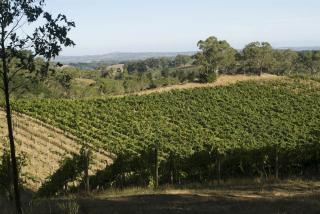 Mike's vineyard in the Hills
Mike's vineyard in the Hills
Back to the wines: in the left corner a magnum of 1992 Tim Adams The Aberfeldy Shiraz. In the right corner, a bottle of 1982 Château Cos d'Estournel. The Aberfeldy was still looking perky with its characteristic slightly minty undertone. The Cos too looked young still with its marvellous concentration of fruit, yet concentration in the traditional Bordeaux sense of beautiful balance rather than a smack in the mouth of fruit and alcohol. There was some discussion about which of the two wines seemed older, but the main difference that Mike pointed out was the slightly aggressive tartaric acidity in the Tim Adams compared to the more natural and gentle acidity of the Cos. He was right and it brought home to me how differently Australian and Bordeaux reds age not so much because of their tannins but rather because of their very different acid structures.
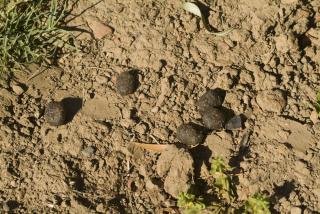 Kangaroo poo in Mike's vineyard
Kangaroo poo in Mike's vineyard
Mike produced a tray of different bunches of grapes for a blind tasting of the varieties planted in his vineyard (some pre-existing, some by him). The sauvignon blanc and chardonnay were easy enough to spot, as was the pinot gris (more by its pinkish hue than anything else). What was less easy to figure out was the savagnin (planted when thought to be albariño) and the garganega (very acidic). There were also two clones of pinot noir and a pre-existing merlot. At the winery (plastic bins, stainless steel and a refrigerated container inside the old Onkaparinga Wool Mills in Lobethal) the sparkling base pinot noir and chardonnay tasted very promising. This will be Mike's first vintage, probably under the name Michael Fogarty Wines, so I wish him luck and hope for his sake that going alone, as so many Australian winemakers are finding themselves doing today, works out for him.
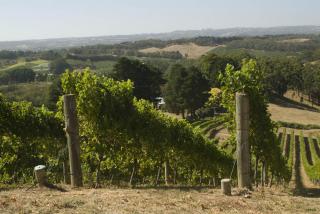 Another Hill's view
Another Hill's view
You won't find Mike's wines yet in Dan Murphy's catalogue, the Fine Wine Buyer's Guide. This is a glossy production with tasting notes of wines chosen by the Dan Murphy's Wine Panel plus guest contributor Andrew Caillard and notes by a host of authorities, among them James Halliday. What struck me most forcibly was the vast disparity in the 100 points scoring systems of the various contributors. Thus, on the one hand for instance. Andrew Caillard, writing on the good Bordeaux 2006 vintage, scores both Château Montrose (AUD$215) and Château Lynch Bages (AUD$170) 87 – 91 / 100. Perfectly good scores but somewhere between bronze and silver on Dan Murphy’s own panel scale. He scores Château Mouton Rothschild (AUD$999) 94 – 96. Meanwhile Dan Murphy go to town on Paul Mas’ Languedoc Château Pal Mas Clos des Mures (AUD$18.80) with 94/100, James Halliday gives the perfectly decent 2007 Ringbolt Margaret River Cabernet Sauvignon (AUD$17.80) a whopping 95 / 100 and something called the Big Red Wine book gives Chapel Hill’s The Vicar (AUD$55.70) a resounding 97 / 100. You can hardly blame the consumer then if he or she gets confused between fool’s gold and the genuine article.
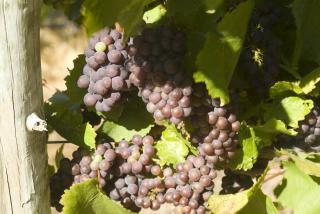 Mike's pinot gris
Mike's pinot gris


Comments
Anthony your comments are quite astute and perhaps add weight to what seems to be a growing chorus of people questioning the worth of the 100-point system.
Most people involved in the wine judging system (whether they use 20 or 100 points) and professional wine writers recognise that a wine is essentially judged in the context of its peers - in the same way you would judge an Andy Warhol amongst pop art and a Renoir amongst renaissance paintings. As such a McLaren Vale Shiraz at 97/100 is not a better wine than Chateau Mouton Rothschild at 94/100. This aspect is as likely to confuse consumers as the simplicity of the 100-point system itself, though recently some reviewers have started to include a value and drinkability rating which some find helpful. This seems to be more effective for price comparisons rather than the more subjective stylistic comparisons - do we judge Hawkes Bay Bordeaux blends against Bordeaux itself ? - generally new world wines shine (and score highly) in their youth but do not have the longeivity of the Old World (same outcome at Sipnot most years with Pinot).
In truth there just isn't an easy or quick way of providing the general consumer with an understanding of a subject that is complex and subjective. Doesn't work for wine, doesn't work for films, music, art or antiques. What might be useful is a better communication of the fact that less than 5% of wines produced rate at or above bronze medal (86 points) and that the show system and wine writers are highlighting a very small % of wines produced. Whether you are talking 90-97 you are talking about the top of the quality tree.
Out of interest Robert Parker Jr is often credited with introducing the 100-point system in the 80s, he didn't, it was Dan Murphy himself who was the first documented usage in his book "guide to wine tasting" 1977.
Many thanks for your considered response. I bet Dan Murphy wishes he'd patented it!